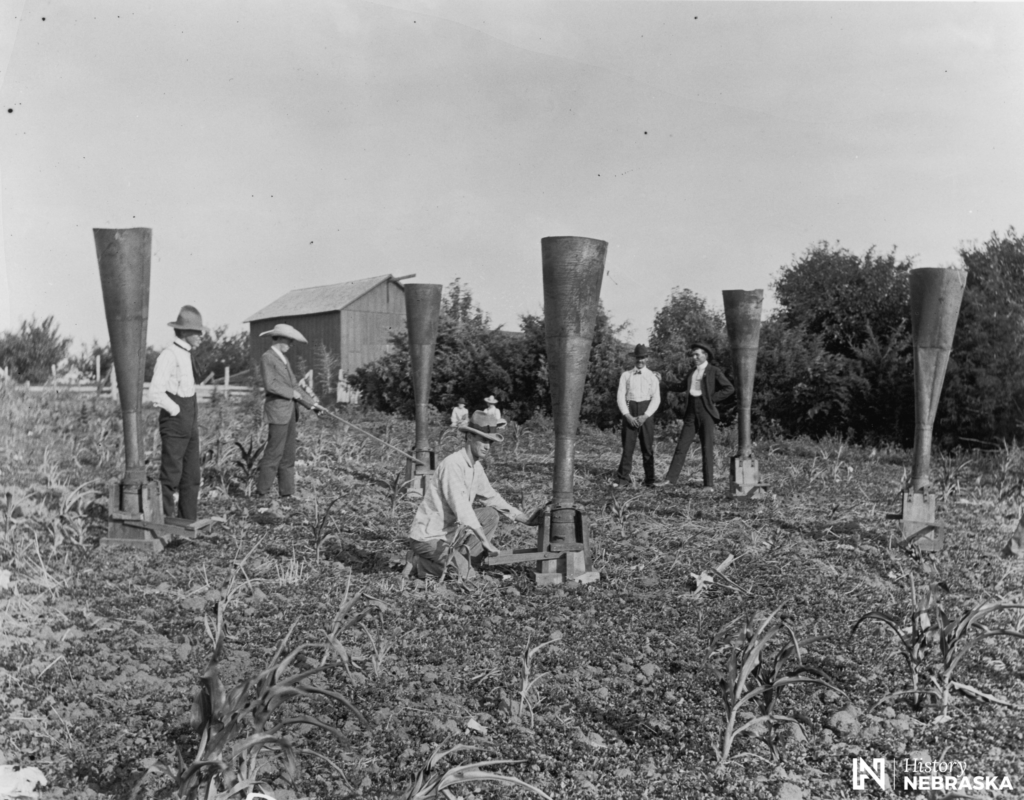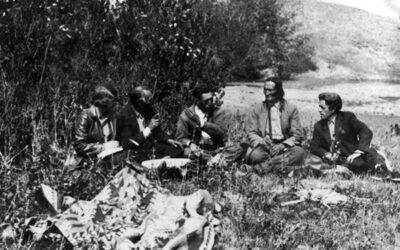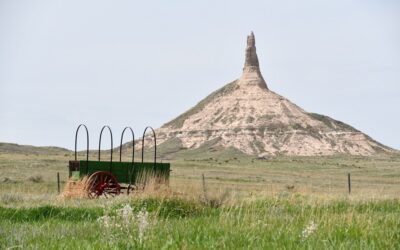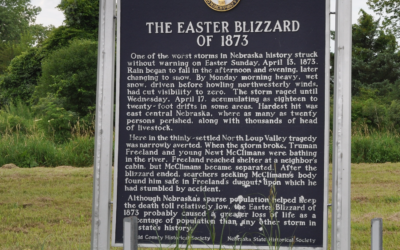
During the 1890s some theorized that smoke particles blown into the clouds would precipitate rain. These men appear to be trying that process. RG2545-9
Modern attempts at rainmaking, such as cloud seeding, may be more scientific and effective but are less flamboyant than former methods used by professional rainmakers. During the severe drought of 1894 in Nebraska, the “concussion theory” was based on the popular observation that the detonation of high explosives sometimes caused rain. Some went a step further, theorizing that smoke particles blown into the clouds would precipitate rain.
Louise Pound, an authority on Nebraska folklore, considered the four most well-known Plains rainmakers to be Frank Melbourne, Clayton B. Jewell, William F. Wright, and William B. Swisher. Melbourne, the most famous and probably the most mercenary of the group, worked in Nebraska, Kansas, and Colorado in the early 1890s. Jewell’s experiments in rainmaking were at first sponsored by the Rock Island Railroad, for which he was a train dispatcher. Wright, a University of Nebraska professor, and Swisher, a pioneer doctor, also achieved some renown as rainmakers.
Read more about the rainmaking activities of Frank Melbourne and William B. Swisher.
– Patricia C. Gaster, Assistant Editor for Research and Publications



